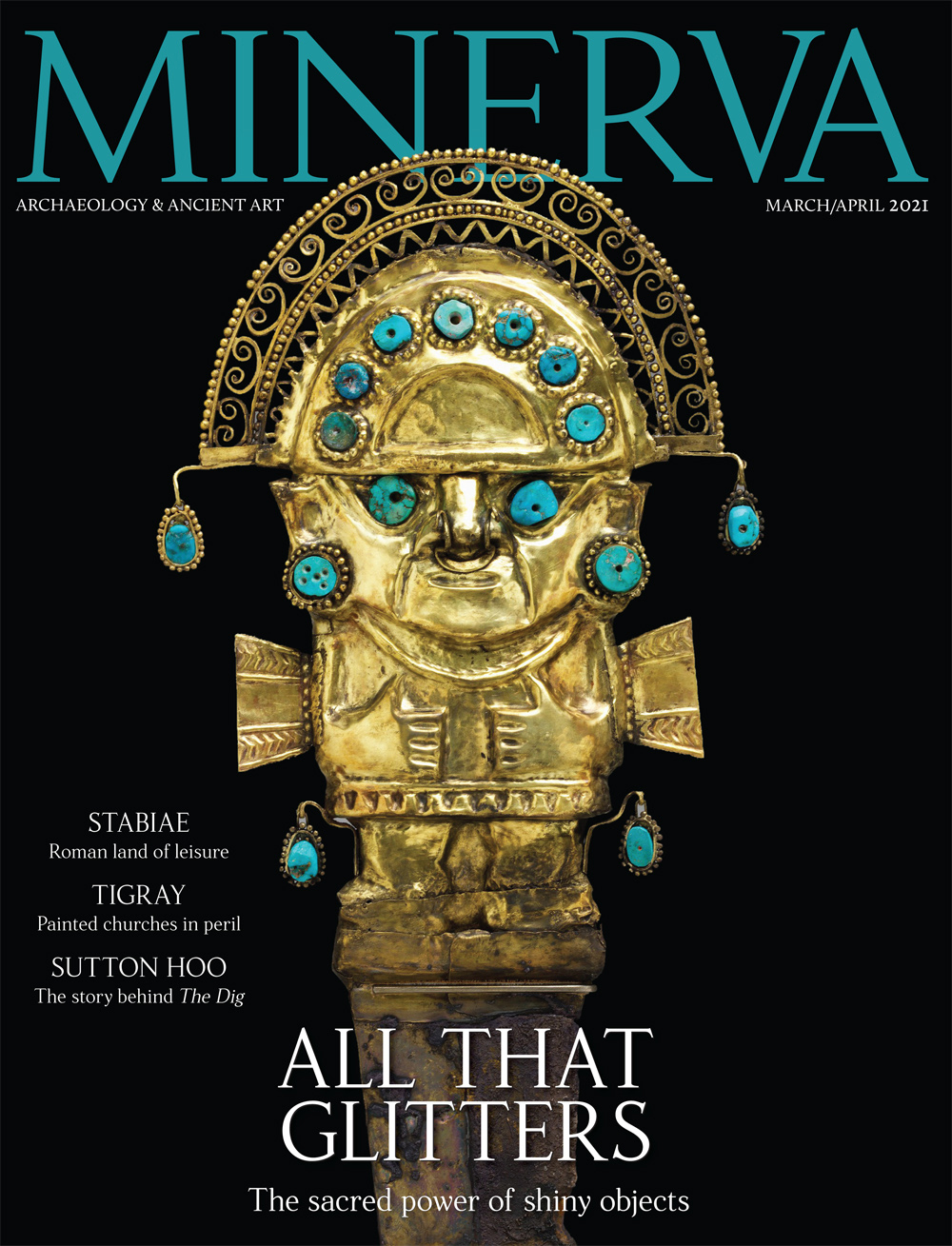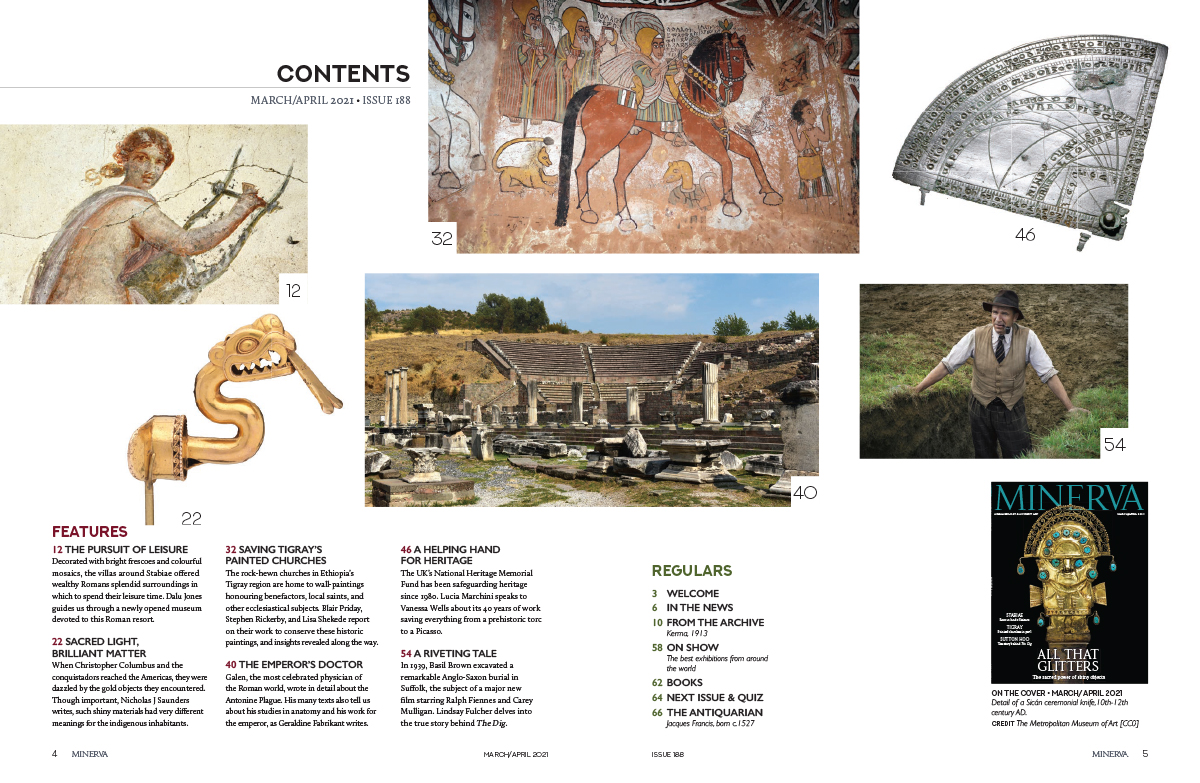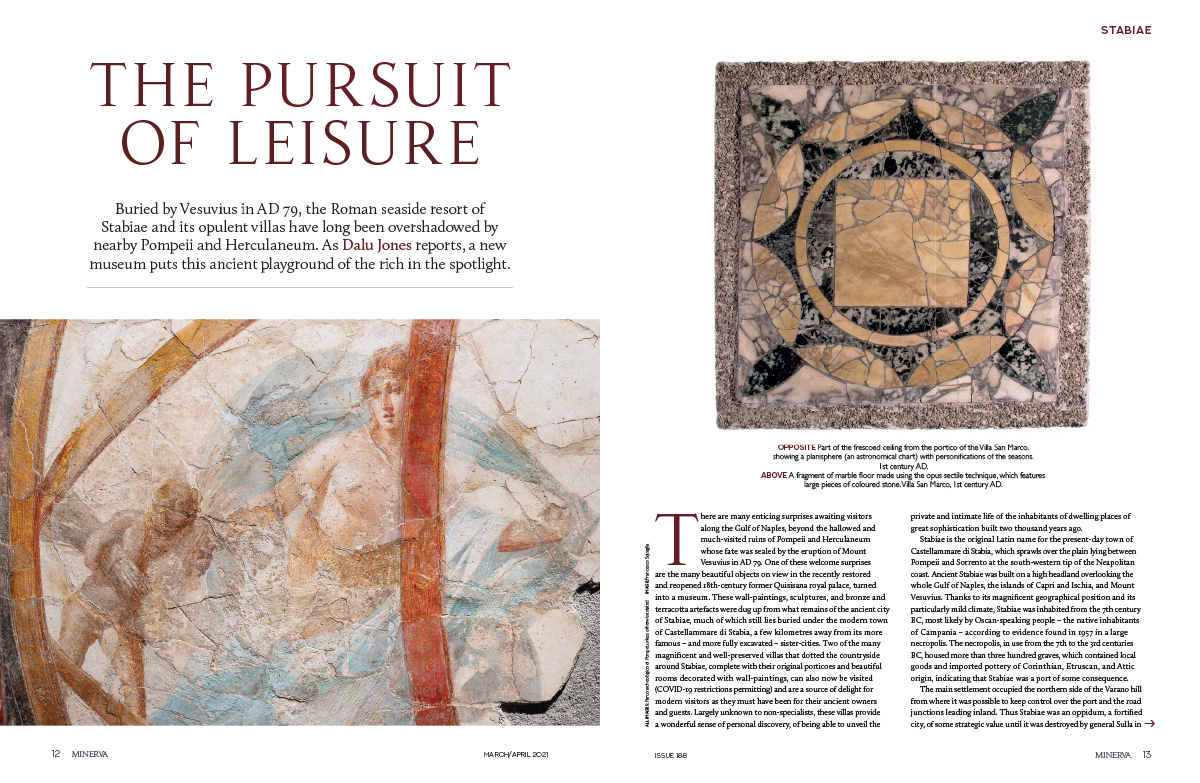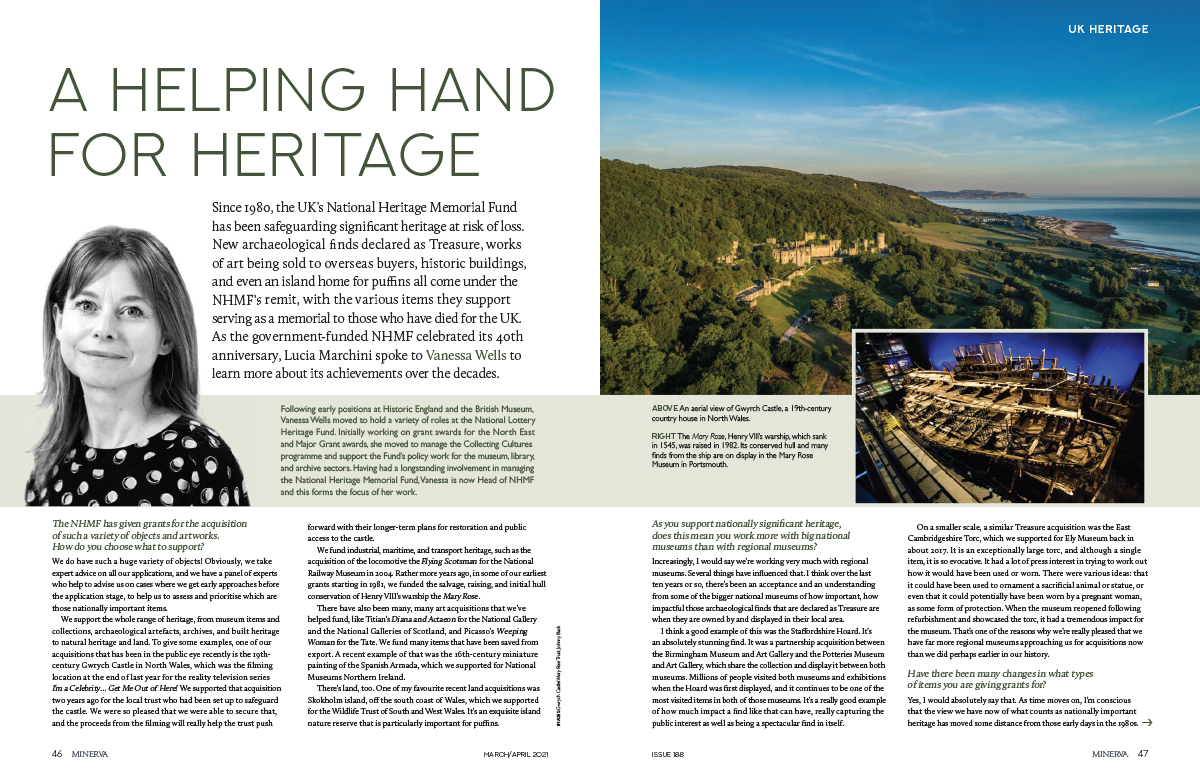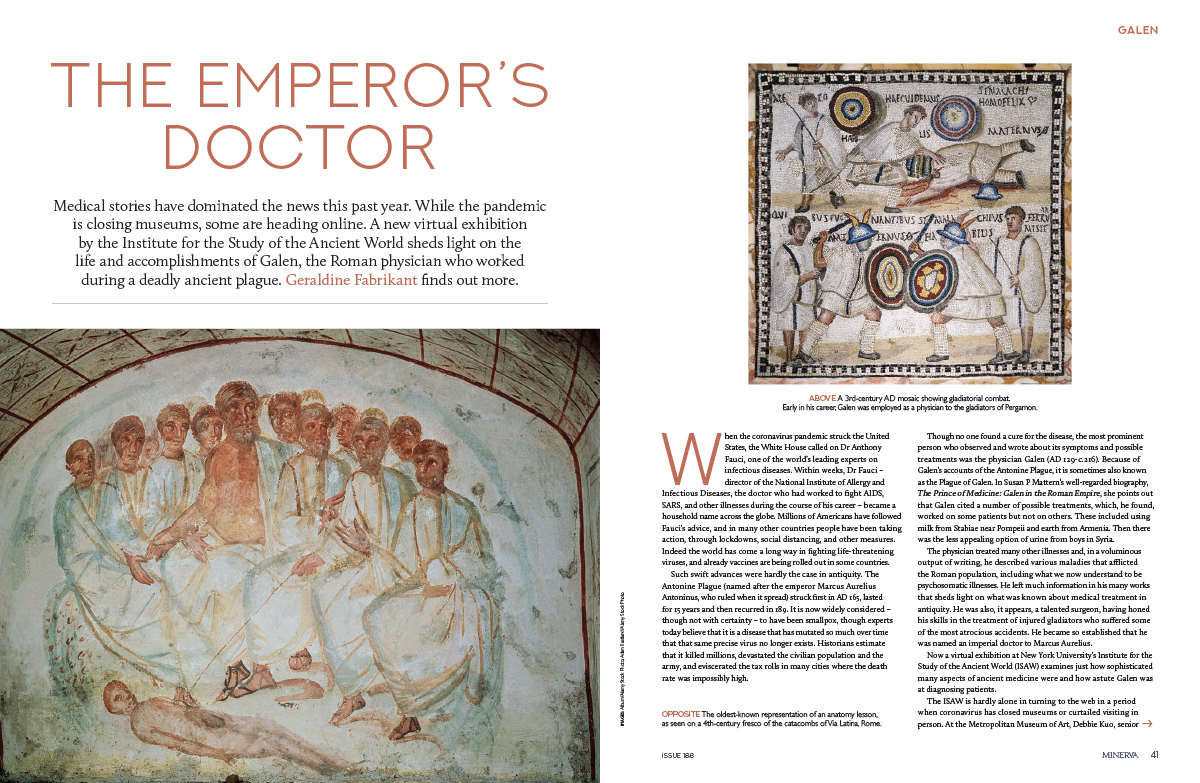People have long been drawn to glittering objects. For America’s indigenous inhabitants, there were depths of meaning beneath the resplendent surfaces of gold, pearls, and quetzal feathers used in an array of objects that served as symbols of power and influence. We explore these meanings in our cover feature, as Nicholas J Saunders take us into a shimmering world of sacred light.
In the Bay of Naples, a long-awaited museum has opened its doors at Roman Stabiae, overshadowed neighbour of Pompeii and Herculaneum. It was in Stabiae’s well-appointed villas, filled with mosaics, ornate stucco, and fabulous frescoes, Dalu Jones writes, that the wealthy pursued otium, a carefully cultivated type of leisure.
From Stabiae’s Roman frecoes, we head to the painted rock-hewn churches of northern Ethiopia’s Tigray region. These remote churches, whose delicate centuries-old wall-paintings are already under threat, are facing new dangers as conflict continues in the area. Blair Priday, Stephen Rickerby, and Lisa Shekede from the Ethiopian Heritage Fund tell us about their work conserving the paintings before the conflict, and how this has laid the groundwork for future conservation.
The works of Galen, physician to the emperor Marcus Aurelius, influenced medicine for centuries afterwards. His extensive writings outlined his experiments, his studies in anatomy, and his views on other physicians and on his own writings. His texts are also a valuable source on the Antonine Plague and various cures attempted – including milk from Stabiae. As we continue through a modern pandemic, Geraldine Fabrikant looks back at medicine in the time of Galen.
In the 40 years since it was set up, the UK’s National Heritage Memorial Fund has given grants for the raising and hull conservation of Henry VIII’s warship the Mary Rose, the acquisition of artworks at risk of being sold abroad, and more. We speak to Vanessa Wells about the Fund’s work, and some of the many archaeological discoveries it has helped museums acquire, including the stunning Anglo-Saxon Staffordshire Hoard, unearthed in 2009.
Decades earlier, a man named Basil Brown made a spectacular Anglo-Saxon discovery, celebrated in a new Netflix film. In 1939, Brown excavated the royal ship-burial at Sutton Hoo. As he is now brought to life on screen by Ralph Fiennes in The Dig, Lindsay Fulcher looks at the remarkable story of this self-taught Suffolk archaeologist and his excavations on the eve of war.

